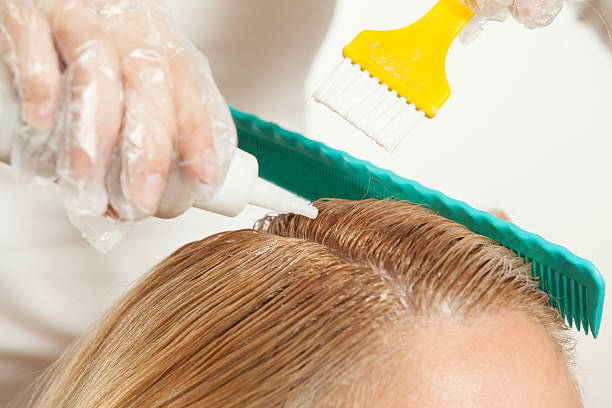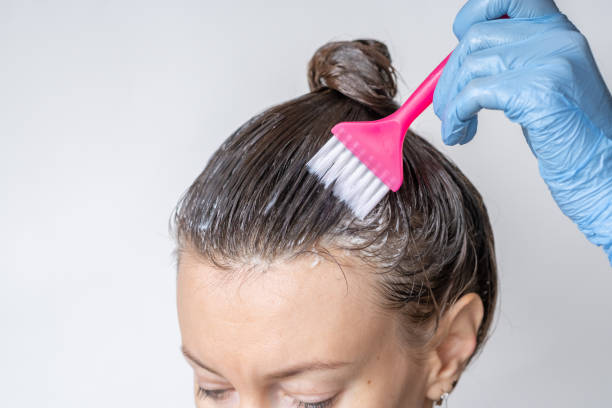Striking the perfect balance between keeping dandruff at bay and maintaining the vibrant hue of color-treated hair can be quite the challenge. This article aims to tackle that very issue, offering guidance and solutions to preserve your color while effectively managing dandruff. The main topic revolves around understanding how to care for your scalp without the fear of fading color and includes natural treatment options, daily care tips, and how to choose the right products. Dive in to discover a world where dandruff control and color vibrance coexist harmoniously.
Understanding Dandruff in Color-Treated Hair

Recognizing the signs and symptoms of dandruff is the first step in addressing the problem effectively. For those with color-treated hair, it’s critical to approach this common scalp condition with greater care, as the sensitivity of dyed strands cannot be overstated. Early signs include a flaky scalp, itching, and visible white specks on the shoulders. Color-treated hair is often more prone to dandruff because the dyeing process can strip the scalp of its natural oils, making it more susceptible to dryness and flakiness.
Natural Remedies for a Flake-Free, Vibrant Mane
When it comes to treating dandruff on color-treated hair, nature offers a bounty of gentle yet effective remedies:
- Coconut Oil Treasures:
Known for its moisturizing properties, coconut oil can provide much-needed hydration to the scalp, thus reducing dandruff caused by dryness. - Tea Tree Oil:
With its antifungal prowess, tea tree oil can alleviate fungal-related dandruff while being gentle on colored hair. - Apple Cider Vinegar:
Acting as a natural pH balancer, apple cider vinegar helps restore the scalp’s natural acidity, reducing the propensity for flakes.
Choosing the Right Anti-Dandruff Shampoos for Color-Treated Hair
Your choice of shampoo plays a significant role in managing dandruff without compromising your hair color. Look for products free of harsh sulfates and parabens that often contribute to color fading. Additionally, some shampoos are formulated with gentle exfoliants to remove flakes without causing irritation. Below is a suggested list of ingredients to look for in a color-safe shampoo.
| Ingredient | Benefit |
|---|---|
| Zinc Pyrithione | Antifungal agent targeting dandruff-causing microbes |
| Salicylic Acid | Exfoliates the scalp, removing flakes |
| Argan Oil | Nourishes the hair and promotes scalp health |
| Tea Tree Extract | Contains antiseptic and antifungal properties |
In-Salon Treatments and Professional Recommendations
A professional hair stylist can provide personalized advice on in-salon treatments that are safe for color-treated hair. Medicated treatments might be necessary for persistent dandruff, but experts can ensure that such treatments are compatible with your hair dye. Regular consultations and being open to professional advice will strengthen your anti-dandruff regimen while maintaining your color-treated hair’s integrity.
Maintaining Your Color and Ditching the Dandruff For Good

Maintaining vibrant hair color while managing dandruff requires specific care routines. Here are practical tips to keep your hair looking its best and your scalp dandruff-free:
- Choose the Right Products:
Use color-safe dandruff shampoos that are specifically formulated to treat dandruff without stripping hair color. These products contain gentle ingredients that protect the scalp’s natural oils and hair pigment. - Regular Washing:
Wash your hair regularly to remove build-up of oils and skin cells, which can contribute to dandruff. However, avoid over-washing, which can strip away color and essential oils from your hair. - Moisturize Your Scalp:
Use a scalp-specific moisturizer or hair mask once a week to keep your scalp hydrated. Dry scalp can exacerbate dandruff and fade hair color faster. - Avoid Harsh Chemicals:
When dyeing your hair, opt for ammonia-free and sulfate-free dyes to reduce irritation that can lead to dandruff and to protect your color’s vibrancy. - Lifestyle Changes:
Diet and stress impact both scalp health and hair condition. Ensure a balanced diet rich in vitamins and minerals and manage stress through regular exercise and adequate sleep.
Conclusion
With the appropriate care and attention, dandruff can indeed be a thing of the past, even for those with color-treated hair. It all comes down to understanding the specific needs of your dyed tresses, using natural remedies wisely, and selecting products specifically designed for your hair type. Keep in mind that a consistent and gentle approach will lead to healthier, more resilient hair that remains lively in color and free of flakes.
FAQs
- Q1: Can I use regular anti-dandruff shampoo on my color-treated hair?
- A1: Regular anti-dandruff shampoos may be harsh on color-treated hair and lead to color fading. Look for shampoos explicitly labeled as safe for color-treated hair.
- Q2: How often should I wash my color-treated hair to control dandruff?
- A2: Washing color-treated hair 2-3 times a week is usually sufficient for controlling dandruff without compromising color vibrancy.
- Q3: What dietary changes can help reduce dandruff in color-treated hair?
- A3: Including foods rich in omega-3s, vitamins, and antioxidants in your diet can enhance scalp health and, as a result, reduce dandruff.
- Q4: Are home remedies safe for treating dandruff in dyed hair?
- A4: Most home remedies, such as those involving natural oils and apple cider vinegar, are safe but always perform a patch test.
- Q5: How can I tell if my hair color is fading due to dandruff treatment?
- A5: Fading color often appears duller and less vibrant after starting a dandruff treatment, signaling it may not be color-safe.

